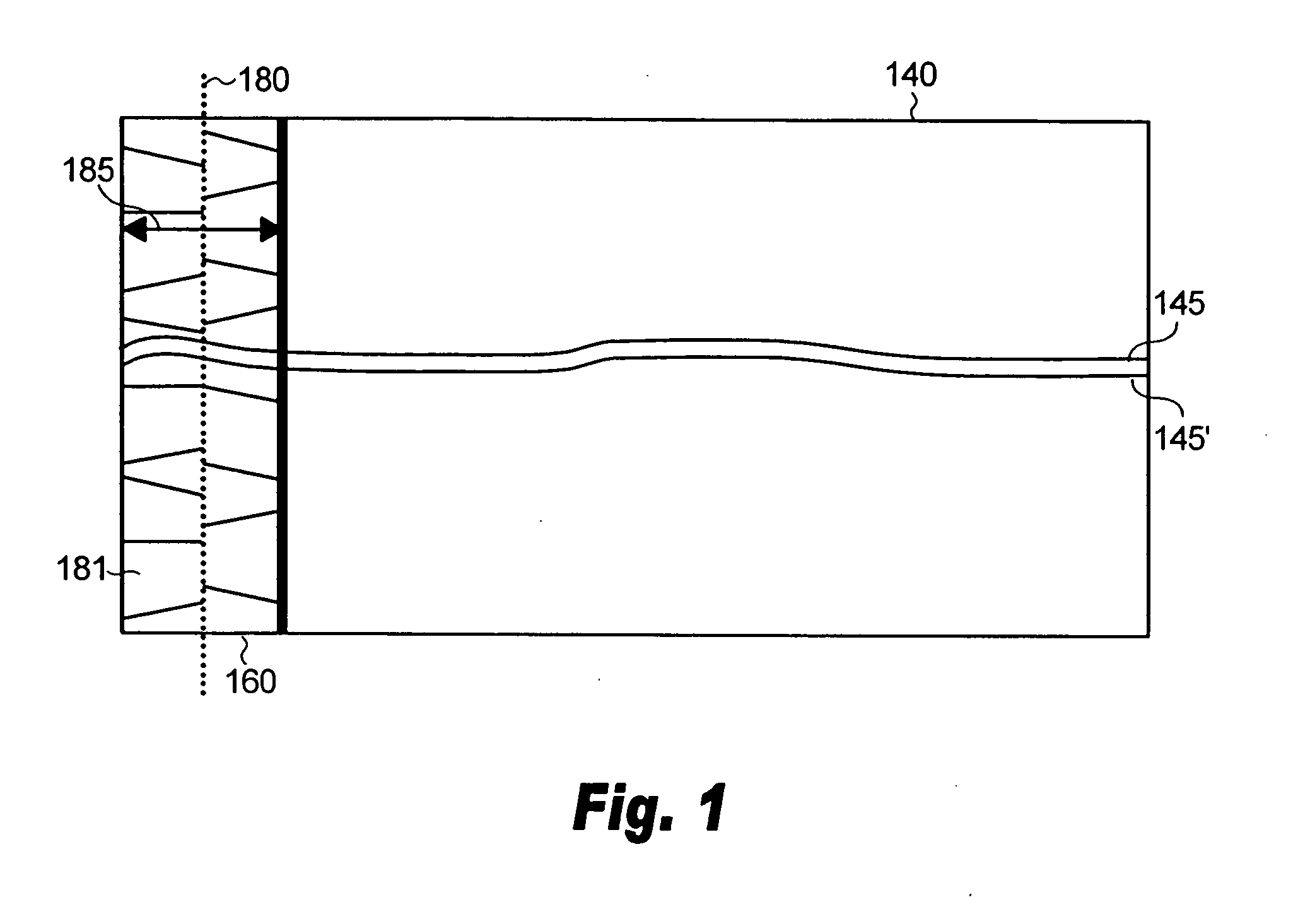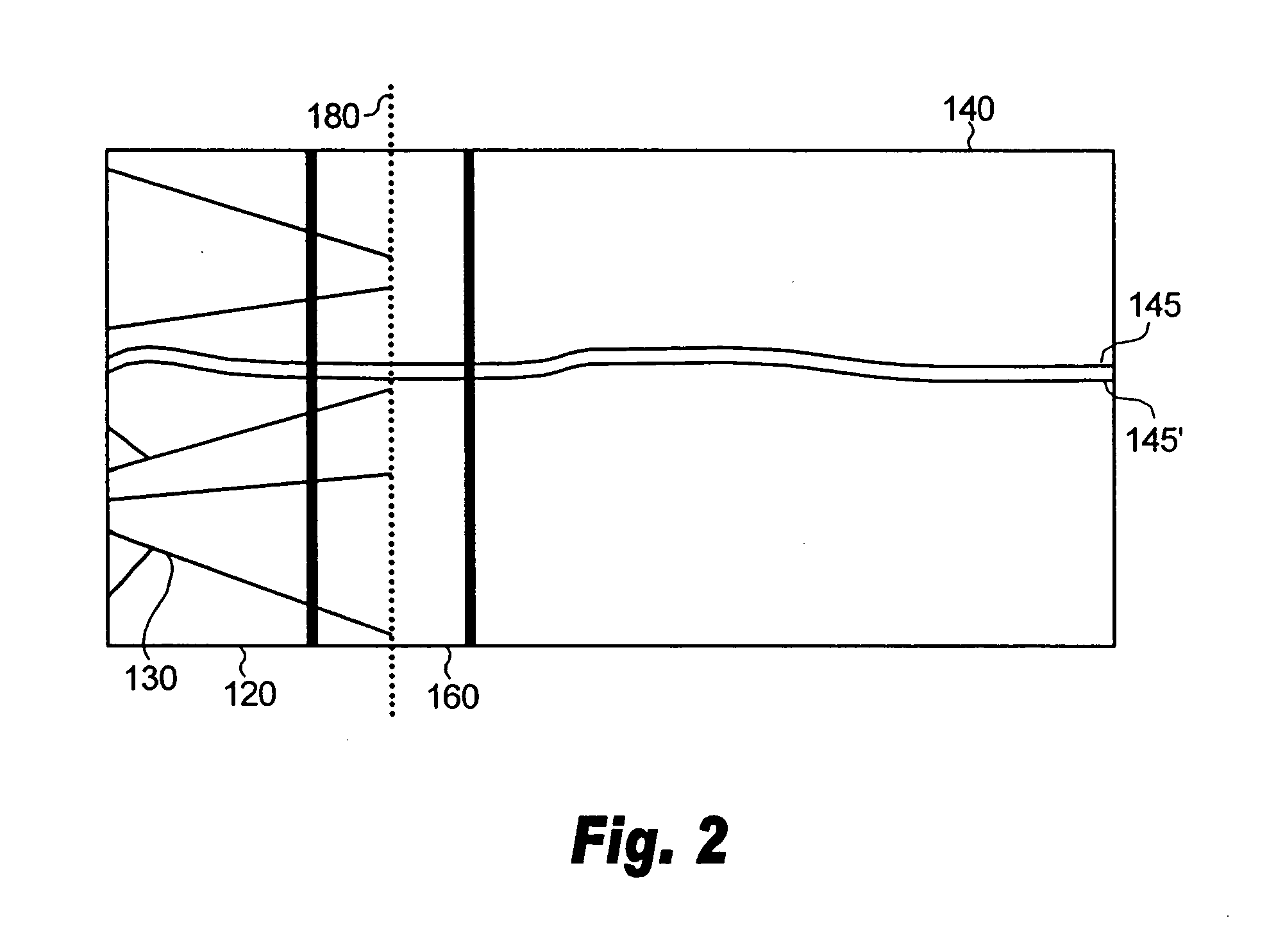Line scan sequential lateral solidification of thin films
a lateral solidification and line scan technology, applied in the field of thin film material processing, can solve the problems of limited ela and sls techniques, slightly different performance in the regions, etc., and achieve the effects of reducing the effect of differing energy fluence and energy densities of consecutive beam pulses, reducing sharpness, and reducing the effect of different energy fluence and energy densities
- Summary
- Abstract
- Description
- Claims
- Application Information
AI Technical Summary
Benefits of technology
Problems solved by technology
Method used
Image
Examples
Embodiment Construction
[0051] The crystallization of a thin film using a pulsed, narrow, elongated laser beam is described. The crystallization of a region of film following laser-induced melting is related to the characteristics of the laser pulse. In particular, the quality, size and shape of crystal grains in a crystallized region are determined by the energy, the spatial profile, and / or the temporal profile of the laser pulses that melt the region. Various irradiation schemes are described for polycrystalline substrates for use in display devices.
[0052] Pulse non-uniformities in an SLS system used to produce crystalline semiconductor films can arise from non-uniformities within a given laser pulse, as well as variations between successive pulses. For example, within a given laser pulse, the spatial energy density profile (e.g., uniformity of irradiation), the temporal intensity profile (e.g., pulse duration and / or temporal shape), and / or the imaging (e.g., field curvature and distortion) may vary. In...
PUM
| Property | Measurement | Unit |
|---|---|---|
| angle | aaaaa | aaaaa |
| angle | aaaaa | aaaaa |
| width aspect ratio | aaaaa | aaaaa |
Abstract
Description
Claims
Application Information
 Login to View More
Login to View More - R&D
- Intellectual Property
- Life Sciences
- Materials
- Tech Scout
- Unparalleled Data Quality
- Higher Quality Content
- 60% Fewer Hallucinations
Browse by: Latest US Patents, China's latest patents, Technical Efficacy Thesaurus, Application Domain, Technology Topic, Popular Technical Reports.
© 2025 PatSnap. All rights reserved.Legal|Privacy policy|Modern Slavery Act Transparency Statement|Sitemap|About US| Contact US: help@patsnap.com



